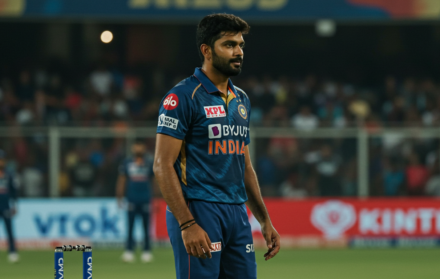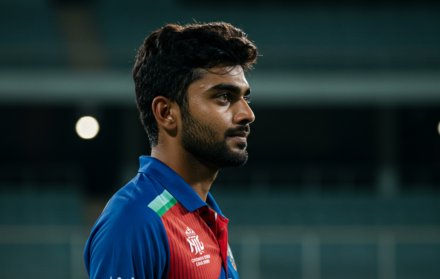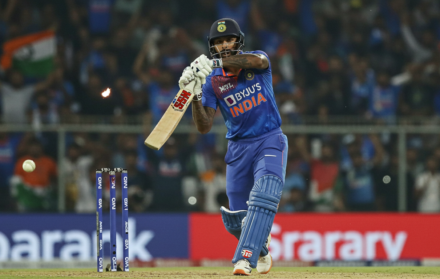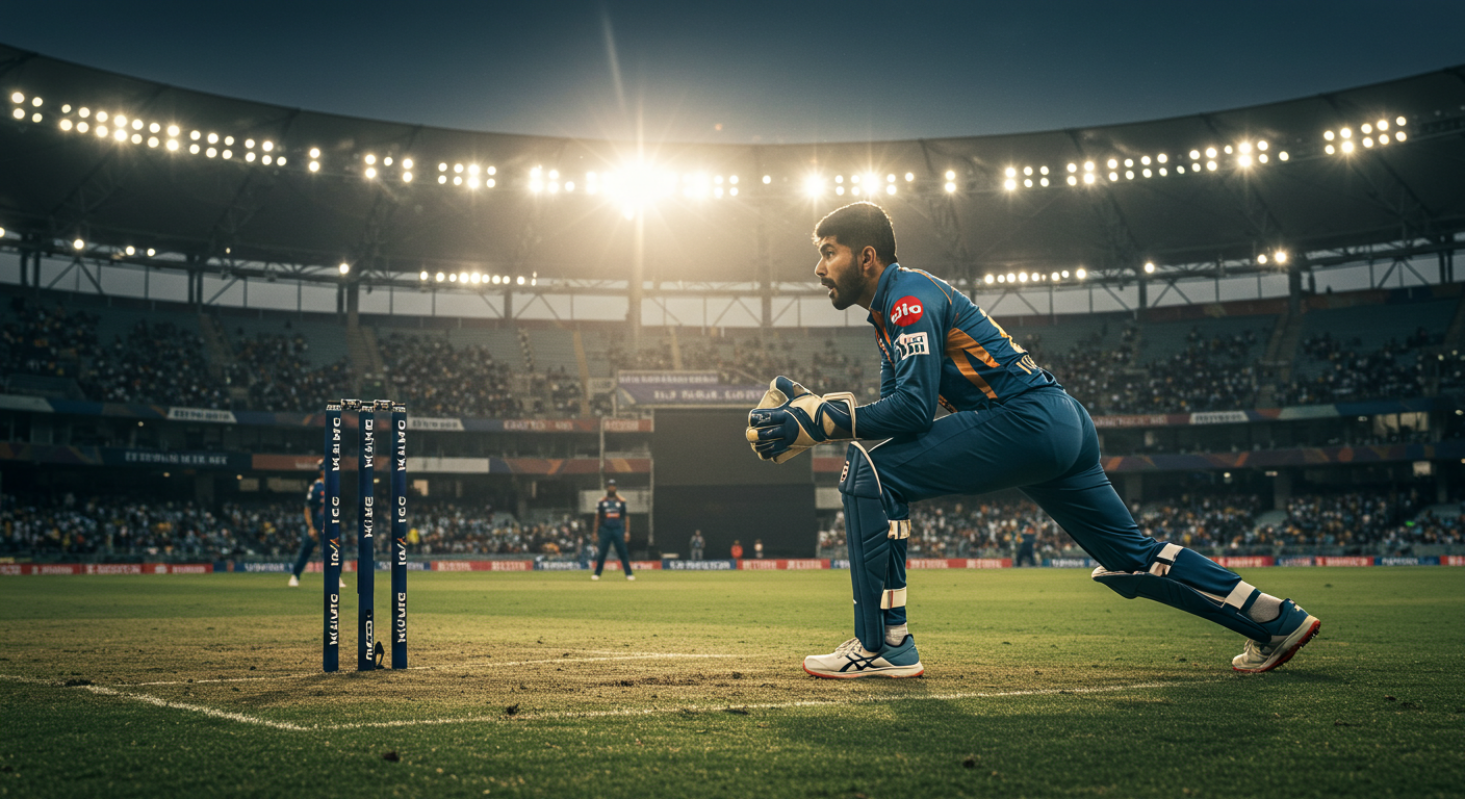
Ishan Kishan: The Explosive Wicketkeeper in Waiting
Ishan Kishan represents a modern mould of wicketkeeper-batter: aggressive, fearless, and versatile. A left-hander with natural timing and a T20-hardened skillset, he has built a reputation as one of India’s most exciting — yet under-utilised — options across formats. While his T20 success has been consistent, his integration into the national team has been sporadic, leaving many to wonder: is India fully capitalising on the value he brings?
Kishan’s profile is difficult to ignore. He’s a top-order left-handed batter who keeps wickets, clears boundaries against both pace and spin, and scores at a strike rate that most teams would build their line-up around. He’s also shown flashes of maturity, particularly in the 50-over format, where his double-century against Bangladesh in 2022 stands as one of the most striking ODI innings by an Indian in recent years.
Yet, despite his domestic dominance and IPL consistency, he hasn’t cemented a place across formats for India. This article evaluates Kishan’s evolution, his impact in domestic and franchise cricket, his role in India’s changing white-ball core, and what needs to happen next for him to emerge as a full-time international mainstay.
IPL Credentials: Consistent, Dynamic, and Trusted
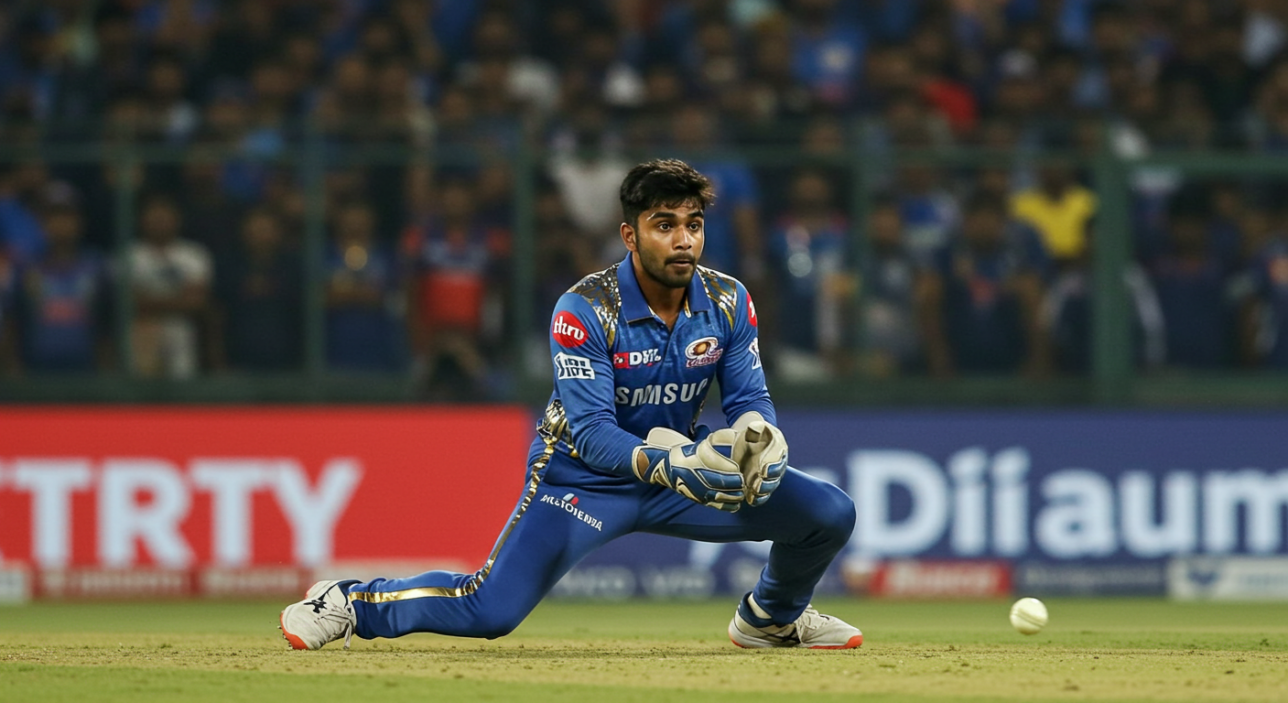
Ishan Kishan’s name has become synonymous with the Mumbai Indians’ top order, where he has served as both aggressor and anchor depending on team needs. Since joining the franchise in 2018, his role has gradually evolved from a lower-order finisher to a key top-order contributor — particularly in the absence or rotation of senior players like Rohit Sharma and Quinton de Kock.
His standout IPL season came in 2020, when he scored 516 runs at an average of 57.33 and a strike rate of 145.76, emerging as the franchise’s top run-scorer. Notably, he hit 30 sixes that season — the most by any player — showcasing both his intent and power-hitting capability.
Kishan is especially effective against spin, with a high strike rate and a confident use of the sweep, slog sweep, and inside-out lofts over extra cover. Against pace, he plays the short ball well, particularly through midwicket and fine leg, and isn’t afraid to take on bowlers from ball one. His ability to change gears mid-innings is a critical asset in high-pressure chases.
He’s also trusted behind the stumps — quick hands, agile footwork, and sharp stumpings have made him a reliable presence even on spin-friendly tracks. While not yet a standout gloveman in Tests, in white-ball cricket his keeping is more than adequate, allowing flexibility in team selection.
In a tournament that mirrors international intensity, Kishan’s ability to deliver across roles and situations has already been proven. He doesn’t just hold his place — he influences matches.
ODI Statement: Double Hundred and the Fight for Continuity
Ishan Kishan’s ODI record is short but punctuated by one of the most emphatic innings ever played by an Indian batter. In December 2022, he scored 210 off 131 balls against Bangladesh — becoming the youngest player to score a double century in men’s ODIs. The innings featured 24 fours and 10 sixes, and came while opening in place of an injured Rohit Sharma.
What made the knock stand out wasn’t just the power — it was the acceleration. He reached his hundred off 85 balls, but his next 110 runs came in just 46, reflecting his ability to scale from stable to explosive in minutes. The opposition, pitch, and conditions were all testing. His response was clear: attack without recklessness.
Despite that performance, Kishan has not been a regular in India’s 50-over XI. The presence of KL Rahul and Rishabh Pant — both wicketkeepers who bat in the middle order — has limited his opportunities. Yet Kishan’s ability to open and also bat at No. 4 or No. 5 gives him a flexibility that is not common among aggressive left-handers.
He’s more than a hitter. His movement across the crease, ability to find gaps, and judgement of length under pressure all point to a player ready for more responsibility.
Kishan’s challenge now is not proving he can deliver — it’s ensuring he gets picked often enough to do it consistently.
T20I Role: Versatile, High-Impact, Yet Underused
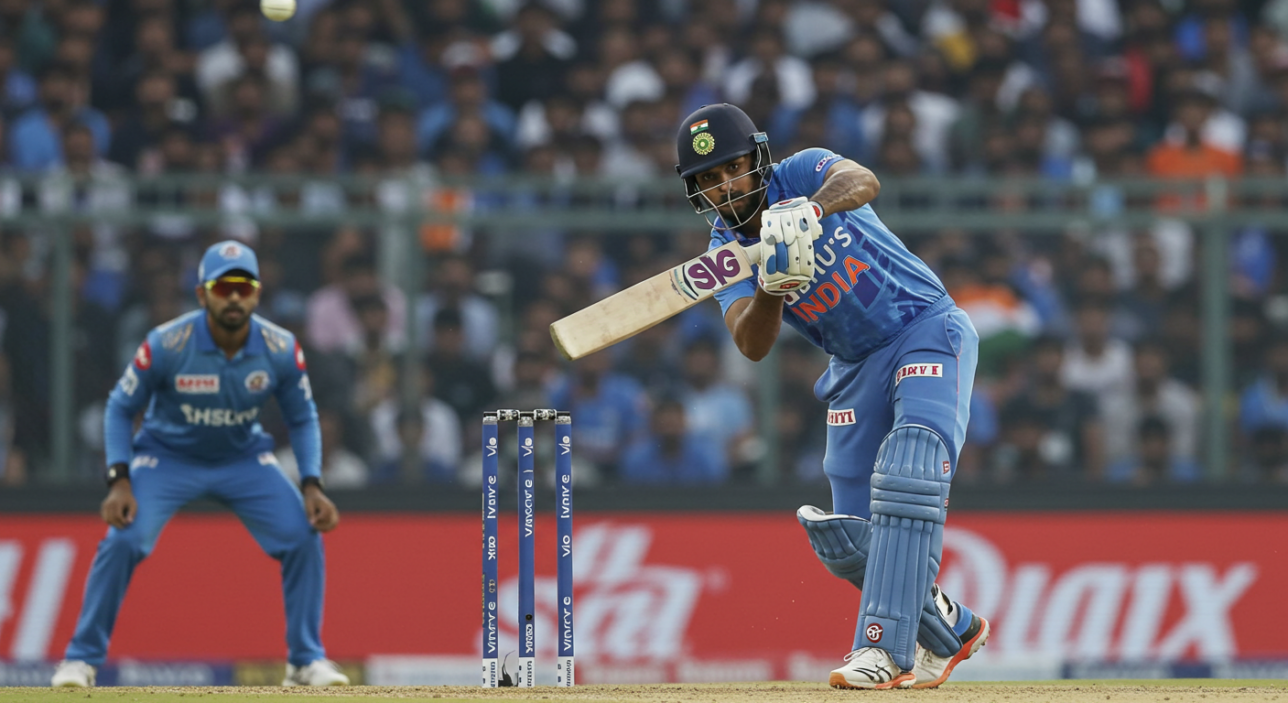
In the shortest format, Ishan Kishan fits the modern template perfectly: left-handed, quick off the blocks, capable of batting anywhere in the top three, and aggressive without being reckless. Despite this, his appearances for India in T20Is have been intermittent, often due to a surplus of top-order talent and inconsistent selection strategies.
Kishan’s T20I record — over 600 runs at a strike rate above 125 — reflects only part of the story. He has often been called upon to open with minimal continuity, facing different partners, varied roles, and little clarity about long-term plans. Still, when given licence, he has produced high-value contributions in powerplays, particularly against pace-heavy attacks.
His intent against fast bowling stands out. He is one of the few Indian batters who regularly pulls and hooks early in the innings, keeping pressure on opening bowlers. Against spin, he uses his feet confidently and attacks the match-up — especially against off-spin, where his boundary percentage is significantly higher.
Unlike some openers who struggle to adapt if not promoted, Kishan has also shown he can play at No. 4 or 5 when needed. His back-foot punch through cover and ability to find angles make him useful against both pace off and pace on.
In a T20 structure that often rewards role specificity, Kishan offers versatility instead — and that might be his biggest strength and challenge combined.
Wicketkeeping: Reliable, Agile, and Tournament-Ready
While Ishan Kishan is rarely listed among India’s elite wicketkeepers, his skill set behind the stumps is solid, especially in white-ball formats. His footwork is sharp, his glovework against spin has improved year on year, and he has pulled off multiple lightning-quick stumpings, particularly in the IPL.
He keeps wickets regularly for Mumbai Indians — often to bowlers like Piyush Chawla, Krunal Pandya, and part-time spinners in pressure situations. This has made him more attuned to subtle lines, glove angles, and reading spin from the hand — essential for Indian surfaces.
His reflexes against fast bowlers are competent, and although his take-off to leg-side deliveries sometimes looks laboured, he rarely concedes easy byes or fumbles on regulation takes. His low error rate, especially in recent seasons, suggests he can be trusted in high-stakes games.
He’s also one of the more vocal keepers in the domestic circuit — setting fields, communicating match-ups, and contributing to bowling plans. While he hasn’t had a sustained run behind the stumps for India due to the presence of KL Rahul and Rishabh Pant, he remains match-ready and tactically aware.
If called upon, he wouldn’t be a temporary fix. He’d be a competitive long-term option.
Mentality and Preparation: Fearless, Not Reckless
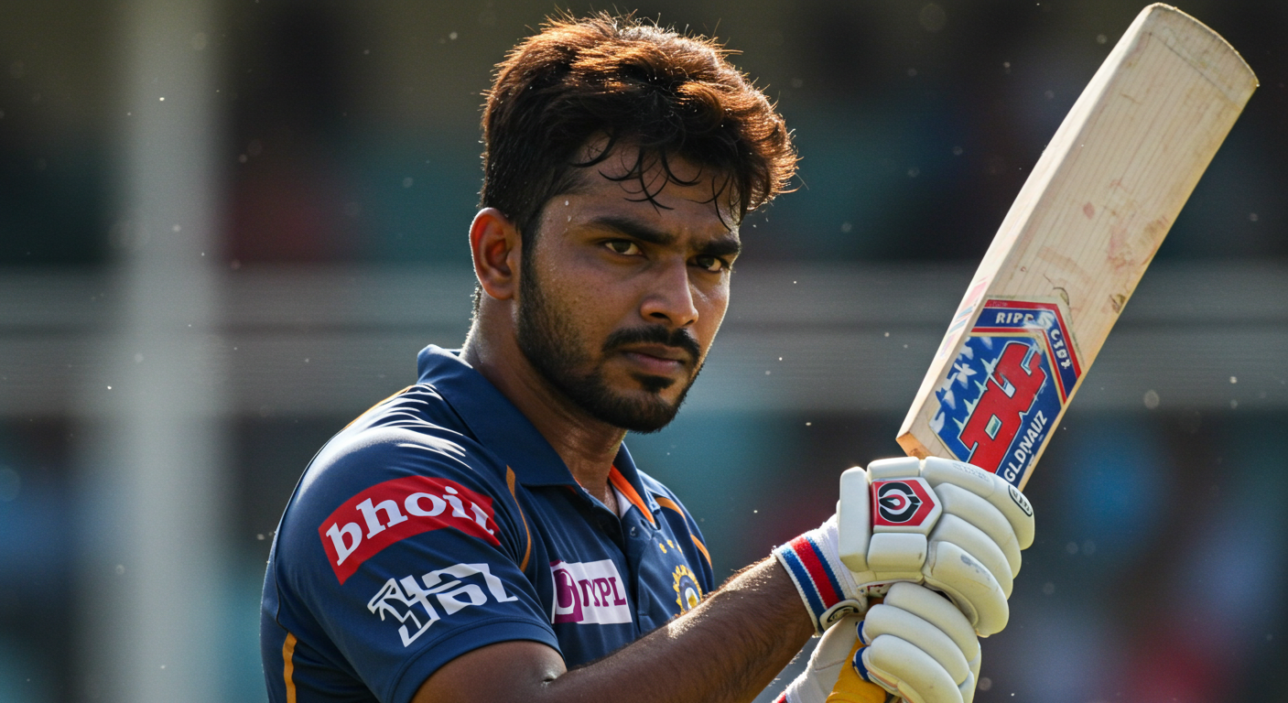
One of the most defining aspects of Ishan Kishan’s game is his mental approach. Whether playing domestic cricket, the IPL, or wearing national colours, he doesn’t hesitate to take on responsibility. He plays on instinct, but it’s backed by preparation — studying bowlers, identifying field placements, and understanding his own strengths.
Kishan is often described as “fearless,” but that isn’t shorthand for carelessness. He’s calculated in his aggression. When targeting a bowler, he rarely takes wild swings. Instead, he positions himself early, chooses specific zones, and executes shots with intentional power and placement. It’s this mix of clarity and conviction that sets him apart from less disciplined stroke-makers.
His interviews and post-match comments reflect a grounded mindset. He often speaks about the importance of patience, adapting to team roles, and keeping things simple. This is particularly relevant for a player whose role can change game to game. His ability to reset mentally, despite batting at different positions or being rotated in and out of the side, is a testament to his maturity.
If mental adaptability is a hallmark of long-term success, Kishan is already showing he has the internal tools to endure — and excel — across formats.
Leadership Qualities and Dressing Room Value
While still early in his international journey, Kishan has quietly developed a reputation as a team player — someone who lifts dressing-room morale and brings positive energy without overstepping seniority. He has captained Jharkhand in domestic cricket, and underlined his ability to manage younger players while maintaining his own performance.
He communicates well with bowlers, helps set fields while keeping, and is often seen talking to teammates during tense moments. His on-field chat — animated but constructive — reveals a cricketer who understands the rhythm of the game. Importantly, he doesn’t fade from a match when not in the limelight. Whether it’s chasing down balls in the outfield or reacting to a bowler’s success, his engagement level remains high.
In a team environment, these traits matter. Coaches value players who don’t just contribute on the scoresheet but also add to cohesion, momentum, and strategic clarity. Kishan ticks those boxes. He may not wear the armband yet, but he already behaves like a cricketer capable of influencing outcomes beyond his individual role.
As India looks to build a younger core for the next generation of global tournaments, Ishan Kishan’s presence becomes even more critical — not just as a batter or keeper, but as a rounded contributor to the team’s ecosystem.
Ishan Kishan’s Path Forward: Format Clarity and Defined Responsibility
Ishan Kishan’s future in Indian cricket depends not on his ability, but on how clearly the team defines his role. At present, he floats between formats, positions, and responsibilities — sometimes opening, sometimes benched, sometimes keeping, other times not. For a player whose game thrives on rhythm and clarity, this inconsistency risks limiting his output.
In white-ball cricket, he offers too much to be sidelined. As a left-handed top-order batter who also keeps wickets and scores at above-par rates, he checks boxes few others do. The challenge is that India’s squad has often prioritised flexibility over commitment — carrying several options without establishing continuity for any.
If the selectors view Kishan as an opening option, he should be treated as such across formats. If he’s considered a middle-order batter in ODIs and T20s, he must be played consistently there — not as a backup but as a first-choice pick. Either way, he needs a run of games with a clearly defined purpose.
With Rishabh Pant recovering and KL Rahul now a part-time keeper, there’s a vacuum for a consistent glove-man who can also dominate with the bat. Kishan could fill that void — but only if he’s developed with long-term planning in mind, not just as a plug-in alternative.
Conclusion: More Than Explosive — Ready for Elevation
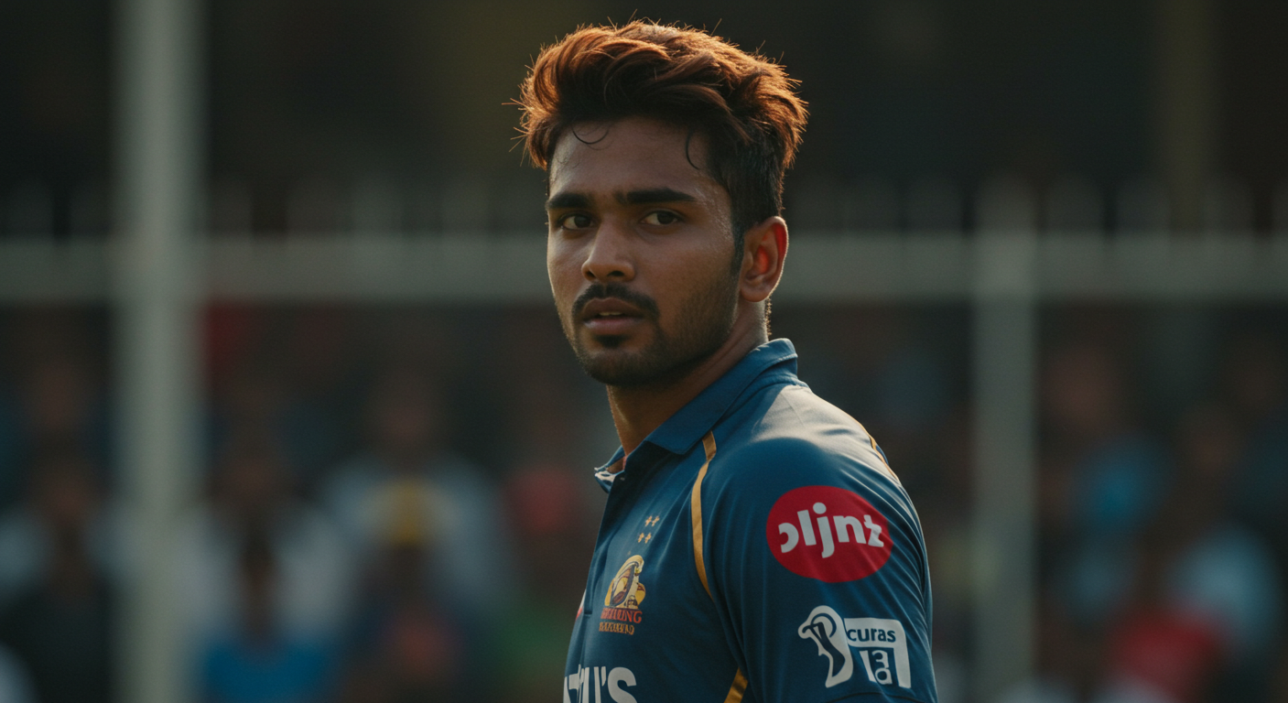
Ishan Kishan’s reputation has been built on power-hitting and entertainment, but that undersells his value. He is not just a short-form aggressor. He is a multi-dimensional cricketer with technical depth, spatial awareness, and an instinctive understanding of game tempo.
His double century in ODIs, consistency in the IPL, and clean glovework are not flukes — they are indicators of a player prepared for a sustained international career. What he lacks is not form, but continuity. And in Indian cricket’s evolving landscape, that might be the one ingredient most needed for success.
If given trust, a fixed role, and a consistent run, Ishan Kishan could become not just a regular — but a match-winner India builds around in the next generation of white-ball cricket.
He is explosive, yes — but also composed, calculated, and overdue for a real run. The waiting might soon be over.
